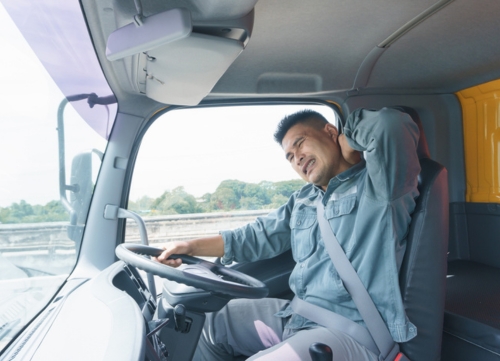In recent years, automation has become a hot topic in various industries, including commercial driving. At SG Fleet, we like to stay up to date with the latest innovations, as they help us apply our international experience and knowledge to provide world-class fleet solutions.
In this article, we will discuss the impact of automation on commercial driving and show how, despite technological innovation and progress in the sector, an experienced team of drivers remains of paramount importance.
Automation in commercial driving refers to the use of advanced technology to perform tasks that were traditionally handled by human drivers. This may include features such as adaptive cruise control, lane-keeping assistance, and even self-parking capabilities. As technology advances, so does the level of automation, with some vehicles now offering semi-autonomous driving capabilities.
However, it's crucial to note that these advancements do not render commercial drivers obsolete. Instead, they serve as tools to enhance the driver's abilities, improve safety, and increase overall efficiency.
There's no denying that automation is having a significant impact on the commercial driving industry. Here are some ways technology is changing the landscape:
Advanced driver assistance systems (ADAS) can help reduce the risk of accidents by providing drivers with real-time information about their surroundings. Features like automatic emergency braking, blind-spot monitoring, and lane departure warnings can significantly improve safety on the roads.
Automated systems can optimise vehicle performance, leading to better fuel efficiency. For example, adaptive cruise control can maintain a consistent speed and following distance, resulting in reduced fuel consumption. Not only can this benefit your business’s bottom line, but it also reduces the carbon emissions of your fleet, making it greener.
Automation can help reduce driver fatigue by taking over certain tasks, such as maintaining a set speed or staying within designated lanes. This can lead to improved driver comfort and reduced stress levels. It’s likely that this will reduce the number of accidents which are often linked to driver fatigue, as well as lowering the instances of burnout common in commercial drivers.
Advanced telematics systems (like our in-house solution Motrak) can provide fleet managers with valuable data on vehicle performance, driver behaviour, and more. This information can be used to optimise fleet operations, leading to cost savings and improved efficiency.

The impact of automation on commercial driving is significant, but it's important to remember that these advancements will not replace commercial drivers entirely. Instead, automation will serve as a tool to improve safety, efficiency, and driver comfort while commercial drivers continue to provide the human touch, judgment, and expertise necessary in the industry.
As we move forward, it's essential for fleet managers and other stakeholders to embrace the benefits of automation while continuing to value the vital role of commercial drivers. By recognising and valuing the role of commercial drivers, we can ensure a bright future for both technology and the individuals who keep our fleets running smoothly.
This balance is crucial because, no matter how advanced automation becomes, there will always be situations where human judgment and decision-making are necessary. For example, a commercial driver may need to navigate through unexpected road conditions or make split-second decisions in emergency situations. As these tasks require on-the-spot decision-making, they can’t be pre-programmed or accounted for. This makes it difficult to entrust such responsibilities to technology.
It’s also important to consider that, in industries like public transportation and freight services, the human touch provided by commercial drivers is crucial for customer satisfaction. Drivers interact with passengers, answer questions, and aid when needed, ensuring a positive experience for customers. Studies show that customer service and interactions will always require a certain degree of human touch. This is something that highly trained drivers and fleet managers can carry out more effectively than technological solutions.

Looking ahead, we can expect automation in commercial driving to continue evolving as new technologies emerge and existing systems become more sophisticated. This evolution will undoubtedly bring further improvements in safety, efficiency, and driver comfort, benefiting both fleet managers and commercial drivers alike.
However, it is also crucial to remember that the future of commercial driving will still rely on the skills and expertise of commercial drivers. As automation becomes more prevalent, drivers may need to adapt their skill sets to work effectively alongside these advanced systems. This may include learning to operate and monitor semi-autonomous systems and staying up-to-date with the latest technological advancements in the industry.
At SG Fleet, we understand the importance of embracing technological advancements while continuing to value the vital role of commercial drivers. Our fleet management solutions reflect this balance as we strive to provide our clients with the best of both worlds: cutting-edge technology paired with the expertise and dedication of skilled fleet managers.
Visit our Fleet Innovation or Fleet Solutions pages to discover more about our comprehensive offerings.
Our team of experts is ready to assist you in navigating this exciting landscape and ensuring the continued success of your fleet operations. Get in touch with us today to discuss your unique needs and learn how SG Fleet can help you unlock your fleet’s potential.
- UK Market Update Q1 March 2023
- How Our Commercial Vehicle Team Can Help You
- SG Fleet Highly Commended: Great British Fleet Awards – Innovation in Customer Service